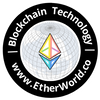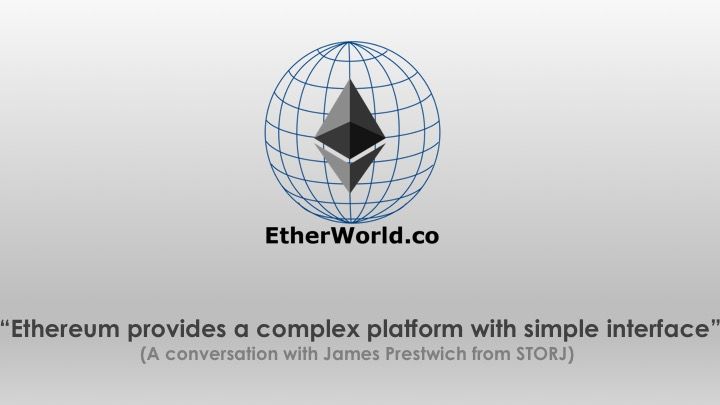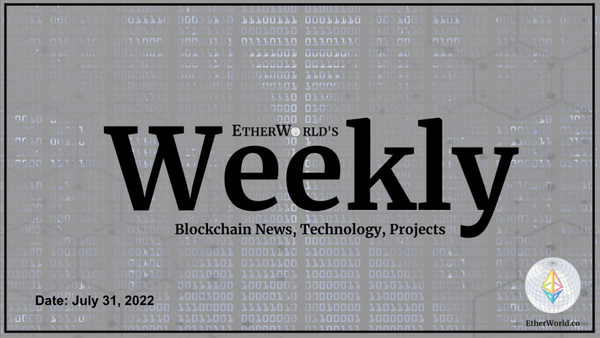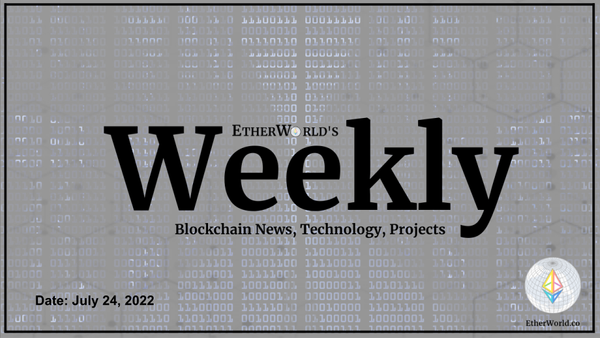EtherWorld appreciates James Prestwich spending time and sharing his insights about the project, migration to Ethereum platform, token sale and the wonderful team of STORJ.
Please follow the article on medium to read the conversation.
Texts from Article on medium
Storj is a peer to peer cloud storage network that implements client-side encryption and allow users to transfer and share data without reliance on a third-party storage provider. Established in 2014, Storj disrupted existing centralized cloud storage system. The removal of central controls helped solve most traditional data failures and outages, as well as significantly increase security, privacy, and data control. It is an open source storage platform where data is not centralized, monitored, or have any downtime.
“Decentralized file storage system like Storj have the potential to eliminate high markup costs and market inefficiencies and provide a much higher level of privacy, reliability and quality of service than we see today.” — Vitalik Buterin
Storj is one of the few organizations which started raising funds with the crowd-sale. Storj has an existing token SJCX with a working product and protocol, which allows users to purchase storage and bandwidth, and get paid for renting out hard drives and bandwidth. Recently, few changes in the organization took place and they decided to raise fund for restructuring with token sale. STORJ is the new token and its sale began on May 19, 2017, 11:00 AM EDT (3:00 PM UTC) and is planned to end on June 19, 2017, 11:00 AM EDT, or when the cap is reached. STORJ raised more than 2/3rd of the planned fund in less than 8 hrs.

EtherWorld appreciates James Prestwich spending time and sharing his insights about the project, migration to Ethereum platform, token sale and the wonderful team of STORJ. James is one of the founders of STORJ. We’re glad to share excerpts of our conversation.
E: Hi James, can you please tell us a little bit about yourself and how you got into STORJ and blockchain technology?
J: My name is James Prestwich. I am the COO and CFO for STORJ, I’ve been doing that for a few years. I joined STORJ in mid 2014 to stature the first token. I work on operations, finance, book keeping, accounting, HR, technical architecture as well. I wrote the current version of white paper and in free time, I do write the code. My background is in software development and small business management. I came from small entrepreneur ventures during after college. One was just me and a friend managing a team of about ten people. I got into STORJ because I was interested in the idea and the technology, I thought it has a lot of potential and it can really change things. My role is to make sure keep things moving. Making sure that we treat this as a business and then focus on product and pay attention to our users.
I stumbled on Bitcoin back in 2012, and followed it out of technical curiosity. It took me a while to really wrack my head around things like proof of work, the way the blockchain works. It really took me a couple of years to crack this what’s really going on? It’s not just the money sending from person to person, it’s machine knowable of payment system. It’s the first time in history when you can have machine exchanging values without human interaction. I am interested in blockchain but don’t know the entire machine economy.
E: Please share foundation story of STORJ and the overview of the project.
J: Back in mid 2014, it was really just me, Shawn Wilkinson and Tome Boshevski were the cofounders. We were working on an open source project. Shawn was writing code in his spare time and doing assigned work of development. We were still in early stages and then came our partner John Quinn who teamed up faster. We came across with all of our potential and saw something interesting and kept working on it. We kept refining it, built more understanding until we made it better and better. Just like I said, when you show up and work, the only reward you get is more and more work. The four of us came together because we had a mix of skill and perspective that worked and started pushing things forward faster. Instead of starting out an open source project, we just started pushing it towards figuring it how not just build the technology but take it people to use it and make it significantly impact.
E: Starting with a small group, STORJ has a big team now that has been together for 3 years. Please share more about the team and key tips to keep a team motivated towards the same vision?
J: Yes, the open source project started 3 years and a month or two ago. We incorporated and started raising money in late 2015, a year and half after that. Since then we started with the four of us and a few community members too. We pooled our testers from directly our community which has been great for us. We are growing fast and we are really excited about it and we are looking forward to keep growing fast.
It’s really a good goal to keep 14 people working for same vision. The real thing that you’ve to do is to communicate constantly, that’s one of my role here is. More like in traditionally managed company, you might call it product management or something like that. Talking to everybody, determining what would act best for the company and best for the users, writing it down and making sure that everyone is on the same page. It really is lot more difficult than I thought it would be, but it’s very rewarding.
E: About platform migration, why team choose Ethereum? What do you think are the main differences between the previous platform and Ethereum? Any interesting story to share?
J: We were previously using the platform called Counterparty, which was the layer on top of the Bitcoin blockchain. We would put so many data on the Bitcoin blockchain and Counterparty knows a good watch for them and interpret as exchanges of token. When we made Counterparty tokens 3 years ago, it was a brand-new platform, had a lot of technical potential and Ethereum was just an idea, then it wasn’t anywhere close to existing. So, we wanted to use the token of the ground and that was the best available tool. Unfortunately, Counterparty failed to grow the way we hoped it would grow like another platform like Ethereum has. So, three years down the road you find yourself locked into a platform that doesn’t work very well. With Counterparty, you always pay a higher fee on a Bitcoin transaction because there is small data in the transaction. It doesn’t support a lot of new Bitcoin features like the good multisig, Counterparty still uses the older style, which actually is completely broken by a Bitcoin core update last year. We were spending hours to figure out why we couldn’t spend our not tokens on our multisig account, Counterparty multisig no longer worked. We came to a conclusion that we need to do something about it. Because we had tokens and this great community, that we were close to it; we needed unique ability to perform a migration like this. We settled on Ethereum because it was a kind of best developed platform in this system. ERC 20 token standard is gaining lot of attention with different projects. It means there are a lot of good wallet out there and more technical projects are underway like micro-payment channel.
Ethereum at its core is a better platform for development than Bitcoin. When you are building a platform, you’ve to keep in mind its complexity; you want people to build on top of this so, you need to have a simple interface. But, since it needs to do something valuable, so platform in itself must be very complex otherwise it wouldn’t be worth in putting it. So, you want a complex platform in simple access to it. Ethereum provides a very complex platform, a complete blockchain virtual machine, but it feels just like developing in JS, an another normal programing language. Whereas, Bitcoin is a complex platform, but its scripting language is reverse polish notation (RPN) stack machine, it’s really a mess. In order to develop anything on top of Bitcoin, you need to spend 80 % of your time just fighting that interface. Lightning network takes long to materialize, makes developing on top of Bitcoin incredibly difficult. So, we figured that we could take this opportunity to move over to what we see a better platform for developers and customers. Hopefully, we will be able to contribute to a bigger ecosystem. Other benefits like less block time and less transaction charge are significant right now but could go away eventually if Ethereum become very popular. Ethereum has better wrap to addressing those things in the form of a channel but Bitcoin doesn’t. So, it’s not that the immediate picture out here but better long-term promise with Ethereum.
E: Blockchain technology is a little complicated for normal person, is it possible to use STORJ for end users having very less understanding of the underlying technology?
J: With this kind of platform complexity, we are trying to find out simple interfaces. We can abstract away this whole distributed network into crypto development interphase, and then developers can abstract that away as a product or the application. So, the end user might be using STORJ and getting the privacy, security and cost benefits of it without ever knowing the platform. The developer can use storage and get the benefits of it without necessarily knowing that they are using distributed network on machine payable contracts. It’s all about taking something and providing a simple interface to it, making it work so well that there is no good reason not to do it. We are trying to upgrade the base level of privacy, security and speed for data storage on the internet.
E: What do you have to say about the token sale? Do you see any difference in previous and preset time?
J: Yes, definitely. We were one of the first projects to do something like this about 3 years ago. At the time, it was real difficult to explain people about what is going on. What is token? It is an altcoin, sort of, it doesn’t have its blockchain, it sits on top of another blockchain. This time around people are already comfortable with this sort of things. The token market right now is really popular. It’s drawing a lot of attention, a lot of companies doing token sales, showing security issuance on the blockchain. It’s really going to be lot easier to get people both individual and company to wrack their head around what we are doing. I get a lot of education piece in the last two years.
We are very optimistic this time. We already have received 2/3rd of it. When you compare us with other project’s token sale or ICO’s right now, we are in a very different state than them. We have years of experience in our field, a working product and an amazing chain of engineers, thousands line of codes, users, developers and farmers. A lot of projects are doing token sale on nothing but an idea. So, we wanted to differentiate our sale and set the capital a little higher because we need more liquidity as we have good things to spend it on. We set the time limit of 30 days, we’ve kind of expected that sale within that time period. I am just trying to relax for a little bit after getting this whole thing out of the door.
E: Would you like to share any timeline / roadmap about project STORJ?
J: Not in terms of specific date. I can talk about what we are planning and working on and why. Right now, our lead engineer is finishing up next version of our core library. It’s a major version, so that’s going to be a big roll out in next few months. We go through multiple phases of testing and then start rolling it out. We’ve set of people dedicated to reliability and performance so making sure that files just don’t disappear, which is something we are really good at. There a lot of backend and network changes we’re working on. We want to work on taking some of the more centralized aspects of our service and breaking it up into decentralized and segregated system. The main focus right now is reliability, we’re going to keep pushing up that to peruse in future.
E: Any plans of working on SWARM protocol?
J: I talk to team regularly on gitter. It would be really nice to be working together. Given how early SWARM could be, it’s hard to say, how that would be. But this is definitely something that we are interested in.
Thank you, James, for sharing details about you and STORJ. EtherWorld wishes you and the team our best.
For more updates, technical blogs and general discussion on Ethereum and blockchain technology, please follow us @ether_world (Twitter), EtherWorld_co (reddit.com) and Ethereum Blockchain Technology (Facebook).








